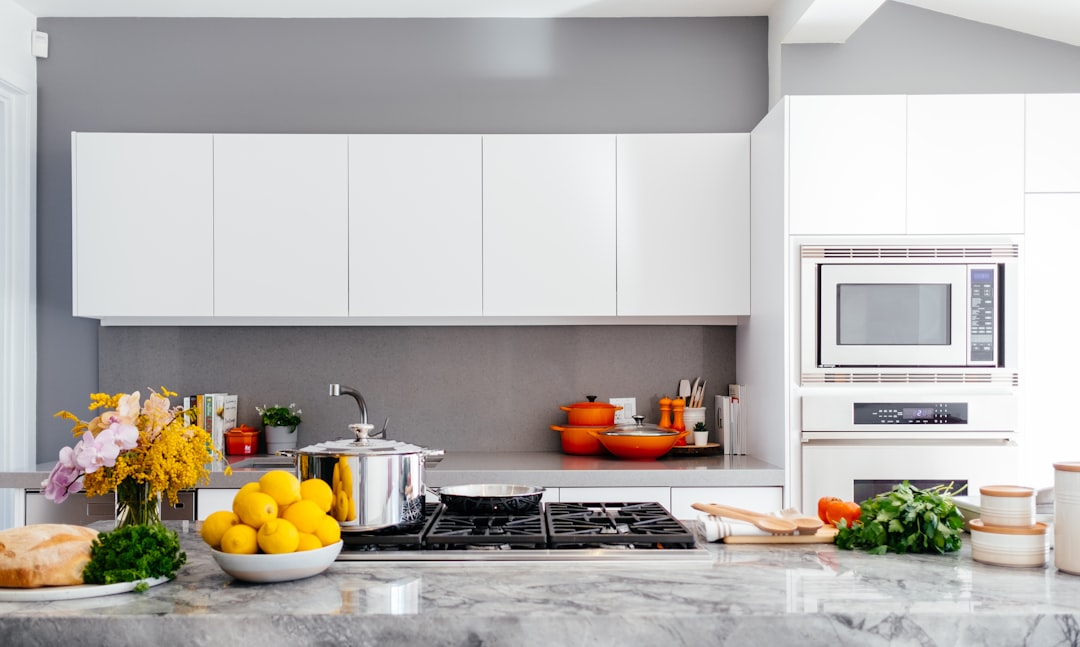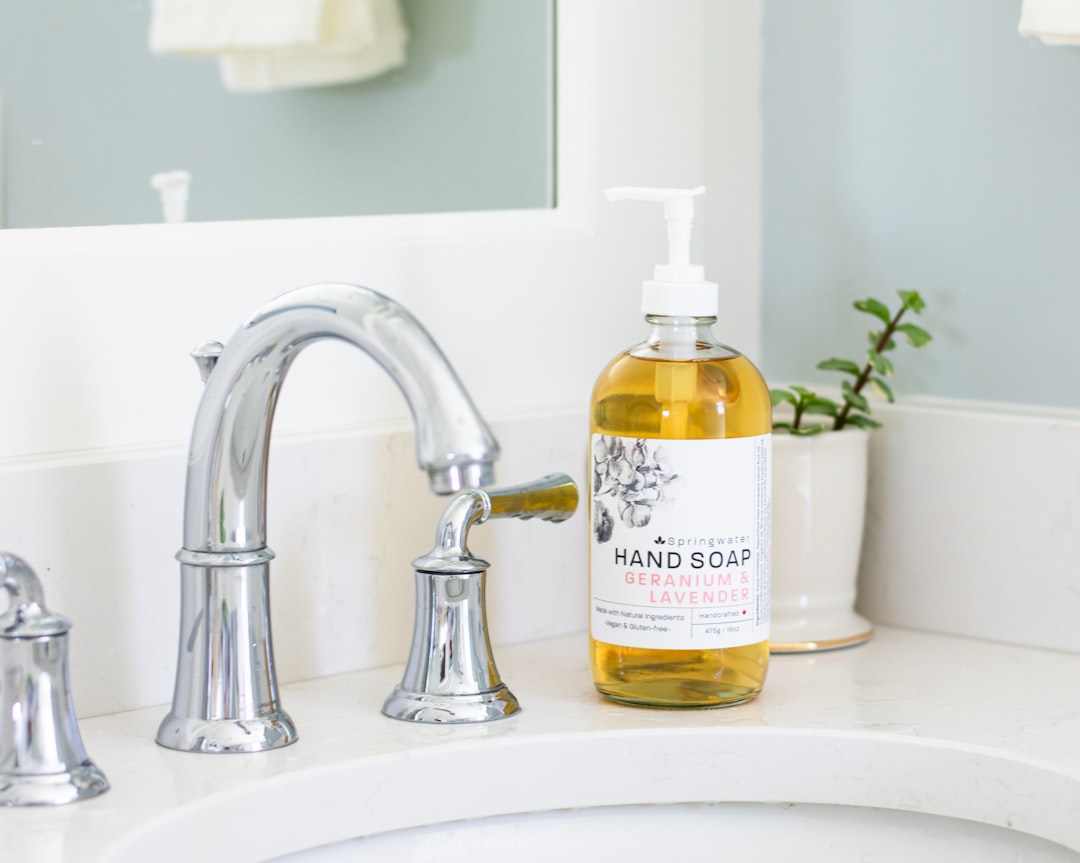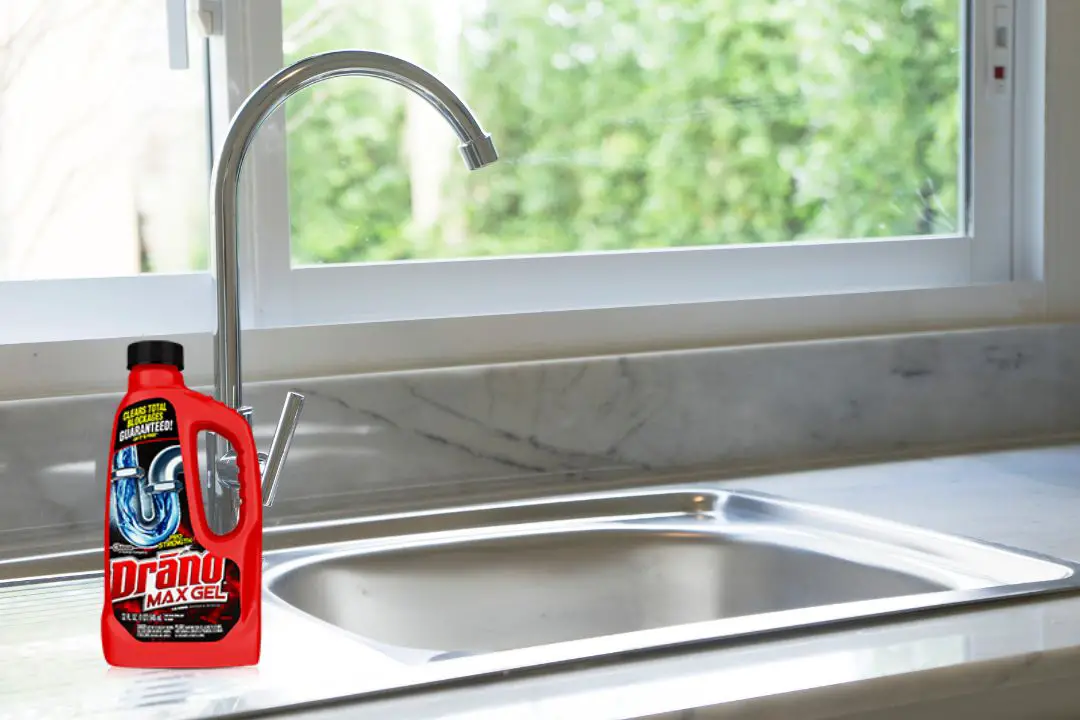We’ve all been there – standing at the kitchen sink, watching as water slowly trickles down a clogged drain.
It’s frustrating and can put a damper on your entire day. But before you reach for that bottle of Drano under the sink, take a moment to consider if it’s safe to use in your kitchen space.
Many people are hesitant to use Drano in the kitchen because they worry about damaging their stainless steel sinks.
And rightfully so! After all, nobody wants to spend money on costly repairs or replace their sink entirely because of one mistake.
In this informative blog post, we’ll answer the question: Can You Use Drano in the Kitchen Sink? We’ll also uncover whether or not this popular drain cleaner can damage your beloved stainless steel sink.
So sit back, relax and let us clear up any doubts you may have about using Drano for kitchen clogs.
You can use Drano in the kitchen sink, but it’s important to remember some safety guidelines. First of all, never mix Drano with anything else, as this could cause a dangerous chemical reaction. Secondly, always wear protective gloves and goggles when handling Drano or any other drain cleaner.
It is also important to know that liquid Drano should never be used on aluminum or steel sinks, as it could corrode them over time.
When using liquid Drano in the kitchen sink, follow directions carefully and move quickly away from any fumes created by the cleaner.
If possible, open windows for ventilation and spray cold water into the sink after pouring in the cleaner.
Ingredients Used in Drano:
Understanding the ingredients used in Drano can give you a better idea of how it works to unclog your kitchen sink.
The main ingredient in most Drano products is sodium hydroxide, also known as lye or caustic soda.
This chemical compound is highly alkaline and can dissolve grease, hair, food particles, and other organic materials that cause clogs in your drains.
Drano may also contain aluminum shavings or flakes that react with water to generate heat.
This exothermic reaction helps to break down tough clogs and clear your pipes quickly.
Some Drano products also include bleach or other chemicals that help to sanitize and deodorize your drains.
It’s important to note that the strong chemicals in Drano can be harmful if ingested or come into contact with your skin and eyes. Therefore, it’s essential to follow all safety precautions when using this product.
Is Drano Safe To Use In The Kitchen Sink?
| Pros | Cons | When to use | Usefulness |
|---|---|---|---|
| Can quickly dissolve clogs | Can damage pipes over time | When other methods have failed | Useful as a last resort |
| Easy to use | Can be harmful to skin and eyes | When dealing with small clogs | Useful for minor issues |
| Can help eliminate odors | Strong chemical smell | When there is a slow drain | Useful for maintenance |
Drano is a popular drain cleaner that many people turn to when they have clogged kitchen sinks. However, it’s important to know if Drano is safe to use in the kitchen sink before using it.
Drano is 100% Safe To Use In The Kitchen Sink because it is made up of powerful chemicals such as sodium hydroxide and aluminum flakes, which work together to dissolve clogs and clear pipes.
While these ingredients can effectively remove stubborn clogs, they can also be harmful if not used correctly.
Follow the Instructions:
It’s essential to follow the instructions on the product label carefully and avoid breathing in any fumes from Drano while you’re using it.
Never Mix Drano with Other Cleaning Products:
Additionally, you should never mix Drano with other cleaning products or solutions like vinegar or baking soda, as this can cause dangerous chemical reactions.
Is Drano Safe for Pipes and Drains?
While Drano is generally safe for most types of pipes and drains, it may not be suitable for all materials. For example, using Drano in a plastic pipe may cause damage over time due to its corrosive properties.
If you’re unsure whether your plumbing system can handle the powerful chemicals in this product, it’s best to avoid using it altogether.
Drano can be an effective solution for unclogging kitchen sinks and removing grease buildup from pipes, users must take precautions when handling this powerful drain cleaner.
What Are The Benefits Of Using Drano In The Kitchen Sink?

Drano is a popular drain cleaner that can effectively unclog your kitchen sink. Here are some benefits of using Drano in the kitchen sink:
- Quick and Effective Solution: Drano works quickly to dissolve clogs and clear your pipes, allowing water to flow freely down the drain. It can remove even tough clogs caused by grease, hair, soap scum, or food particles.
- Easy to Use: Using Drano is simple and straightforward. Just pour the required amount of product into the clogged drain, wait for 15-30 minutes as directed on the label, then flush with hot water.
- Versatile Cleaner: Drano can be used not only in kitchen sinks but also in bathroom sinks, shower drains, tubs, toilets and more. Therefore you don’t need to buy different products for different types of plumbing problems.
- Affordable Remedy: Compared to hiring a plumber or purchasing expensive tools like snakes or plungers which may not work always; using Drano as a first line treatment usually proves economical.
However, it’s important to follow instructions carefully when using this chemical product – if they are accidentally misused by leaving them for too long they could potentially damage your pipes (especially in older metal ones)
What Are The Drawbacks Of Using Drano In The Kitchen Sink?

While Drano can be an effective solution to clear clogged drains, there are some drawbacks to using it in the kitchen sink.
Drano Contains Harsh Chemicals:
The first drawback is that Drano contains harsh chemicals, like sodium hydroxide and sodium nitrate, which can damage your plumbing over time. These chemicals can eat away at your pipes and cause corrosion.
Not Always Work Effectively:
Another drawback of using Drano in the kitchen sink is that it may not always work effectively on certain types of clogs.
For example, if the clog is caused by excessive grease buildup or a foreign object stuck in the drain, then Drano may not be able to remove it completely.
In such cases, you might need to use a snake or plunger instead.
Also, using Drano in stainless steel sinks won’t necessarily cause any damage by itself; however, if you have an enamel-coated sink or plastic pipes under your sink then avoid using this product as they could get severely damaged due to its harsh chemicals.
If you do decide to use Drano as a last resort for unclogging your kitchen sink make sure you follow all safety precautions printed on the label carefully and don’t leave it sitting too long in one spot.
Repeat application after 15-30 minutes if required rather than leaving it overnight as this may lead to further problems down the line. Ultimately though cleaning out drains with baking soda and vinegar followed by boiling water will help keep them clean without risking any costly damage!
Will Drano Damage A Stainless Steel Sink?

Stainless steel sinks are a popular choice for modern kitchens due to their durability and sleek appearance. However, many homeowners worry that using Drano can damage their stainless steel sinks.
Fortunately, Drano is safe to use in a stainless steel sink as long as you follow the instructions on the label. The active ingredients in Drano – sodium hydroxide and sodium nitrate – won’t harm your sink’s stainless steel surface.
However, it’s important to note that leaving Drano in contact with your sink for an extended period of time may cause discoloration or damage the finish.
It’s best to flush the drain with water immediately after using Drano and wipe down any excess product that may have splashed onto your sink.
Additionally, if you have a deep clog that requires multiple applications of Drano, it’s best to avoid pouring it directly into the drain.
Instead, pour it into a plastic container or bowl first before carefully transferring it into the drain to prevent accidental spills onto your stainless steel sink.
How Much Drano Should be Used in the Kitchen Sink?
When it comes to using Drano in your kitchen sink, it’s important to know how much of the product should be used. Using too little may not effectively clear the clog while using too much can lead to damage in your pipes or even your sink.
The instructions on the Drano bottle suggest using pour 16 oz for a standard kitchen sink with standing water.
However, if you have a particularly stubborn clog or a larger sink, you may need to use pour 32 oz. It’s important to follow the instructions carefully and avoid overuse.
If you’re unsure about how much Drano to use, start with the recommended amount and wait for several minutes before flushing with hot water.
Repeat as necessary until your drain is clear. Avoid using other chemical products at the same time as Drano as this can cause a dangerous chemical reaction.
It’s also important to note that if you have plastic pipes or PVC plumbing fixtures, it’s best to avoid using Drano altogether as it can cause damage.
In this case, try alternative solutions such as boiling water and vinegar/baking soda mixtures, or consider contacting a professional plumber.
Other Ways To Unclog Your Kitchen Sink:
Aside from using Drano, there are other effective ways to unclog your kitchen sink. Here are some options:
- Boiling water: One of the easiest and most cost-effective ways to unclog your kitchen sink is by pouring boiling water down the drain. Boil a large pot of water and slowly pour it down the drain in two or three stages, allowing time for the hot water to work its way through the pipes.
- Plunger: Use a plunger to create suction and force out clogs in your sink. Fill the sink with enough water to cover the plunger head and plunge vigorously for several minutes.
- Baking soda and vinegar: This classic DIY solution can help clear away stubborn clogs without harsh chemicals. Pour one cup of baking soda down the drain followed by one cup of vinegar, then cover the drain with a plug or rag while it fizzes up for about 30 minutes before flushing with hot water.
- Snake or wire hanger: A plumbing snake or bent wire hanger can be used to manually remove clogs, but be sure not to push them further into your pipes.
It’s important to note that some methods may be more effective depending on what is causing your clogged sink (grease buildup versus foreign objects) and whether you have a garbage disposal unit installed in your kitchen sink.
How Often Should I Use Drano?
When it comes to using Drano in your kitchen sink, it’s important to use the product only when necessary.
The frequency of usage depends on how often you experience clogs in your sink.
However, even if you frequently experience clogs, it’s best to avoid using Drano too often as the chemicals can damage your pipes and potentially lead to bigger plumbing problems.
Using Drano once every few months or as a last resort when other methods don’t work is recommended.
If you find yourself needing to use Drano more than a few times a year, it may be worth investigating other options such as regularly cleaning out grease buildup from your sink or switching to a different type of drain cleaner that is less harsh on your plumbing.
By being mindful of how often you use Drano and taking preventative measures against future clogs, you can ensure that your kitchen sink remains clear without causing unnecessary damage to your pipes.
Can You Use Drano In Kitchen Sink With Garbage Disposal?
Using Drano in a kitchen sink with garbage disposal can be tricky. While Drano is designed to remove clogs and clean out pipes, it may not work as effectively on grease or food particles that are stuck in the disposal.
Additionally, using Drano in a sink with garbage disposal can be dangerous if you’re not careful. The chemicals in Drano can damage the blades of the disposal and cause other plumbing problems.
If you’re set on using Drano to unclog your kitchen sink with a garbage disposal, there are some steps you should follow:
- Turn off the power to your garbage disposal before pouring any chemicals down the drain.
- Carefully pour half of the recommended amount of Drano into your sink.
- Allow the solution to sit for at least 30 minutes (or according to package instructions).
- Turn on the hot water and run it for several minutes.
- If necessary, repeat these steps until your drain is clear.
However, it’s best to avoid using chemically-based products like Drano or other drain cleaners altogether when dealing with a clogged kitchen sink that has garbage disposal attached.
Instead, try using natural methods like baking soda and vinegar or boiling water combined with dish soap for gentle yet effective results without causing any damage to your pipes or appliances.
If these methods don’t work, consider using an enzymatic cleaner specifically designed for removing grease and food particles from drains.
You could also try using a plunger or snake tool designed for use in sinks – just make sure they are safe for use in metal or plastic pipes before attempting anything yourself!
Conclusion
Drano can be an effective solution for unclogging a kitchen sink, but it’s important to follow the instructions carefully and use it sparingly.
While it may be tempting to rely on chemical products like Drano, there are also other ways to clear clogged drains without damaging your pipes or sink.
If you do decide to use Drano in your kitchen sink, make sure you avoid pouring it down a garbage disposal and always wear gloves and protective eyewear.
Additionally, be aware that using too much Drano or using it too frequently can damage your plumbing over time.
Overall, if you’re dealing with a clogged kitchen sink and want to try using Drano as a cleaner or remover solution, just remember that there are other less harsh options available such as vinegar and baking soda.
It’s always better to take preventive measures regularly rather than relying on chemicals only when faced with a problem.

